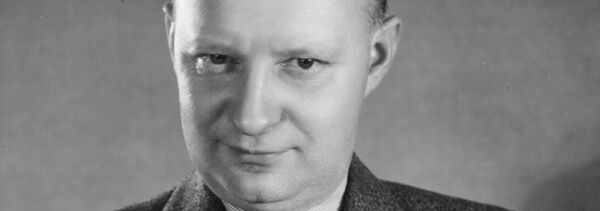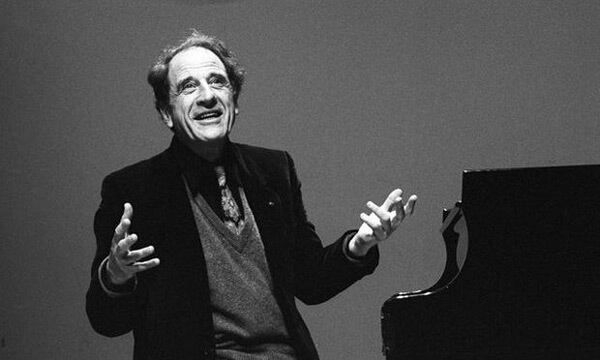 Despite this concert having been anticipated in The Wall Street Journal and The Jewish Week (as well as in these pages), it was not particularly well attended, with the lion’s share of seats empty. Indeed, Paul Hindemith remains unknown even among some who consider themselves classical music fans. A reappraisal of his work and influence is thus always welcome, and this well-curated program shed new light on the composer, his pedagogy, his protégés, and even his personality. Yale school of Music brought faculty, students, and alumni to Zankel Hall at Carnegie Hall on November 22, 2013, to forge a direct musical link to this master of theory, melody, form, and fugue.
Despite this concert having been anticipated in The Wall Street Journal and The Jewish Week (as well as in these pages), it was not particularly well attended, with the lion’s share of seats empty. Indeed, Paul Hindemith remains unknown even among some who consider themselves classical music fans. A reappraisal of his work and influence is thus always welcome, and this well-curated program shed new light on the composer, his pedagogy, his protégés, and even his personality. Yale school of Music brought faculty, students, and alumni to Zankel Hall at Carnegie Hall on November 22, 2013, to forge a direct musical link to this master of theory, melody, form, and fugue.

Composer Paul Hindemith (photo credit: hindemith.info)
In Kleine Kammermusik, Op. 24, No. 2, the composer captured the frenetic pace of industrial growth that characterized the inter-war years. No one would call this musical language atonal, but it contains humor alongside a tongue-in-cheek dark, dissociative pensiveness and sense of disturbance not usually found in the romantic tradition. At the same time, there is something very primal and peasant-like in the bouncy tough rhythms.
In the opening movement, “Lustig,” phrases of urgent square rhythms are separated by recit.-like laments of the oboe (Timothy Gocklin) and flute (Jacob Mende-Fridkis). Hindemith does much with just 5 instruments, able to combine three distinct musical ideas, like larger orchestral layers stripped down to the bare essentials. The “Walzer” movement is clearly not for dancing feet! Rather, this is a waltz of dancing light and quantum energy. In “Ruhig” the horn player (Philip Browne) was able to produce very high timbres more characteristic of trumpet. The flexible timing of the players did not at all compromise their neat ensemble sound. In the final “Sehr Lebhaft” the players delight in making all sorts of strange harmonic intervals take flight.
Trills, anyone? Alvin Etler’s Suite for flute, oboe, and clarinet turns the venerable ornamentation into a musical motive in its own right. The melodies of each instrument often inhabit the same small range, brushing up against one another, sometimes sensually, but often discourteously. They say that a dog and its owner gradually, over time, begin to resemble one another, and that strange effect is discernable in the Pavane, as the players approach each other’s timbre so that we are hearing a conversation between siblings. The piece’s Finale employs great dynamic range, and then a trick ending.
Performers stood for Mel Powell’s Woodwind Quintet (1985), and the oboe (Hsuan-Fong Chen) and flute (Christina Hughes) were like birds of paradise both in their playing and in their charming red dresses. The musical action here is compressed into short bursts that either die out into a lucid silence, or sustain one note; either way, there is a conscious effort to arrest time. We hear five travelers, each speaking a different language, trying to strike up a conversation and being very expressive to make themselves understood. Upon hearing Powell’s first essay into twelve-tone composition, Hindemith is alleged to have said, “So, you’ve gone over to the other side.”

Composer and pianist Yehudi Wyner (photo credit: bruceduffie.com)
The composer Yehudi Wyner (at 84!) played piano in his Concordance for piano and strings (2013). This quartet opens with an explosive major seventh stretched out over several octaves. Like the previous piece, the subtle juxtaposition of different timbres is treated in an experimental way. The slow decay of piano notes against sustained pianissimo violin bowing resembles parallel lines eventually converging in the deep curve of space.
After the intermission, jazz musician and scholar Willie Ruff shared a remembrance of Hindemith and a testimony to his influence. When Ruff heard that Charlie Parker’s unrealized dream was to sit at the feet of Hindemith and study music, Ruff decided to do the same. He auditioned at Yale, and to his surprise, was accepted. He recounted how Hindemith would have his students play and sing through the music of all eras from the middle ages to the present, including the opening chord of Stravinsky’s Symphony of Psalms, “the most fun you can have with your pants on.” Ruff shared his undiminished awe at how Carl Sagan contacted Hindemith to help translate his fascination with the astronomer Johannes Kepler into a Sound of the Earth for the golden record now aboard the Voyager spacecraft about to exit our solar system.
The opening movement of Hindemith’s Sonata for four horns demonstrates the composer’s love of fugue. A rising fifth, the most fundamental partial on any brass instrument, calls our attention to its subsequent spinning out into a beautiful tapestry. The Variationen are difficult to follow explicitly, but easier to feel, to intuit. Bill Purvis (Yale faculty) and the students with which he played this piece seemed quite at ease with the material, even devotional in their measured approach to this exploration of musical space. The final modest chord was a quiet genuflection to the timelessness of consonant harmony.

Lukas Foss’s Three American Pieces for violin and piano initially seem more influenced by Satie than by Hindemith. In the last movement, “Composer’s Holiday,” very simple ideas are developed into lively acrobatics. As in the first movement, the interval of a third hops up and down the range of the violin against varied harmonic contexts, never getting dull.
The concert ended with Hindemith’s Kammermusik No. 1, Op. 24, audaciously scored for string quintet, flute, clarinet, bassoon, trumpet, percussion, piano and harmonium (for which a synth was employed. I would’ve preferred to hear the optional accordion; during the sound-check, the amplifier screamed and terrified the audience). During the “Quartett: Sehr Langsam und mit Ausdruck,” conductor Bill Purvis simply dropped his head and his hands and allowed the clarinet (Eric Anderson) and flute (Isabel Lepanto Gleicher) to conduct their slow, somber dialogue, punctuated by the sounding of a celestial F# on a tone chime. The final movement begins with a primordial rumble swelling and eventually attacked by machine gun shots from the snare drum. Virtuosic piano runs by Henry Kramer, trumpet lines full of pomp by Jean Laurenz, and a final ambulance wail helped the ensemble lay down the composer’s road map for a 20th century of messy but exciting democracy.
What, then, was the influence of Hindemith on his Yale students? Clearly, they seem to have resisted the pull of minimalism and post-minimalism. Their music does not seek to induce a trance-like state, but rather places gripping demands on the musical intellect of the listener. The essential considerations of his Neue Sachlichkeit (new objectivity) from the 1920s (structure, accessibility, and independent lines, according to program annotator Dana Astmann) seem to have survived throughout the century in the work of his students. They made do quite well without his characteristically strict rhythmic organization, but indulged in the harmonic possibilities unleashed by his bold theoretical ideas. Much as theoretical physicists seek a unified theory of everything, the Hindemith school honors the formal considerations and rhythmic impulses of the tonal era while expanding the range of harmonic and melodic possibilities to encompass effects that approach the disorienting sounds of serialism, the clash of modernity with the tradition, even the beauty of birdsong.




















